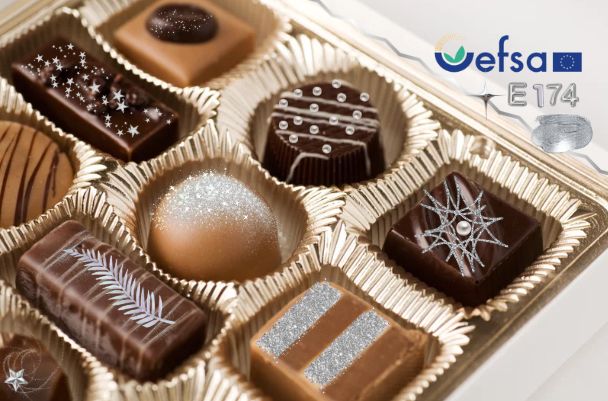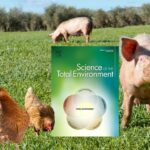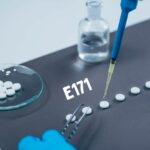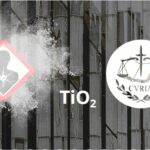
Is the food additive E174, made of silver (nano)particles, about to be banned?
Nine years after its first unsuccessful attempt to assess E174 safety, the European Food safety authority (EFSA) published yet another report stating that the agency can still not conclude on the safety of this silvery colorant used mainly in pastry, chocolat and confectionery (like dragées and decorative sugar pearls). All but one E174 supplier failed to respond to the European Commission data call, and the information provided were insufficient. While regretting the lack of transparency from E174 suppliers, NGOs welcome EFSA openness and support the ‘no data, no maket’ approach. AVICENN has asked the European Commission and representatives from the confectionery and chocolate-making industry about what follow-up they were planning to give to the case.
E174 is a food additive made of silver (nano)particles
The E174 food additive is used as a colorant by pastry chefs and chocolatiers as well as consumers, not only for its silver hue, but also sometimes for a golden sheen. It is sold, as such or incorporated into food products, in many specialized webshops1like Autourdugâteau.fr (45 references with E174 in April 2025), CuisineAddict (42 references), Cake Délice (31 references), and also in many stores that have a DIY section for cake design and baking2like La Boutique à pâtisser (25 references), Labo&Gato (17 references), DécoRelief (15 references), Du Bruit dans la Cuisine (3 references), etc. for products such as:
– colorants for the external coating of confectionery items3like this silver coating colorant to decorate cakes and these iridescent colorants by ScrapCooking, sometimes even sold in sprays4like this FunCakes bombspray;
– sugar pearls5for example, those sold by De Neuville, Planète Gateau, ScrapCooking, Jeff de Bruges, …, vermicelli6for example, Fun cakes sold by Autour du gâteau or CakeMasters sold by Votre gâteau, or dragées7for example, those sold by Maison Girard, Médicis Paris, Guy Pécou, La Boîte à Dragées, Dragées Anahita, …;
– decorations of chocolates, like silver flakes8for example those sold by Bellorr, silver or golden foils9like those sold by Cook-shop or again sugar pearls10like those sold by Comptoir du Cacao;
– and also in liqueurs11like the M&S Spiced sugar plum light up Snow globe Gin Liqueur by Marks & Spencer.
Nine years ago, a first failed attempt at E174 assessment by EFSA
In 2016, EFSA’s scientific panel on food Additives and Nutrient Sources added to food (ANS Panel) found that the available data were insufficient to draw a conclusion on E174 safety12EFSA ANS Panel (EFSA Panel on Food Additives and Nutrient Sources Added to Food), Scientific opinion on the re- evaluation of silver (E174) as food additive, EFSA Journal, 14(1), 4364, 2016. The major issues identified at that time included the quantity of nanoparticles contained in E174, the potential release of ionic silver, and also the lack of comparable information on the silver used in available toxicity studies.
In order to reduce the uncertainties and the gaps in the dataset, the European Commission issued in 2018 a public call to gather data from interested business operators (IBOs).
Results of the second risk assessment attempt published in April 2025
– Only one E174 supplier provided… insufficient data:
In their new report, just published on April 2313Follow-up of the re-evaluation of silver (E 174) as a food additive, EFSA, April 2025, EFSA describes the process and results of this call for further data. In 2021, only one E174 supplier provided information on characterisation, manufacturing processes, particle size and morphology of silver used as a food additive, and it turns out that provided information on particle size of E174 was very limited:
– only one qualitative scanning electron microscopy (SEM) image was provided for E174 produced by the ‘atomisation process’ (which produces silver powder) and no SEM images were provided for E174 produced by the other manufacturing process (‘leaves process’ which produces silver leaves or powder.);
– incomplete quantitative information on particle size was provided for two samples only of E174 produced as powder by the ‘leaves process’.
→ as EFSA points out, the limited number of samples coming from a single manufacturing process may not be representative of all E174s present on the EU market. The average and median thickness of silver platelets were reported to be 170 nm for one sample and 182 nm for the other. The fraction of particles (by number) with a thickness less than 100 nm was respectively 0 and 3%.
However, researchers from the Belgium laboratory Sciensano in 201914Cf. Estimation of the Uncertainties Related to the Measurement of the Size and Quantities of Individual Silver Nanoparticles in Confectionery, Waegeneers N et al., Materials, 12(17), 2677, 2019 and 202015Cf. Physico-chemical characterisation of the fraction of silver (nano)particles in pristine food additive E174 and in E174-containing confectionery, de Vos S et al., Food Additives & Contaminants: Part A, 37(11), 1831–1846, 2020 have found different figures in their separate and independent study on ten silver food additives E174, and ten food products containing the food additive E174: in their samples, coming from Belgium, the United Kingdom, and Germany, and analysed within the NanoAg@ project 16funded by the Belgium Federal Public Health, Food Chain Safety and Environment service, 97% of the E174 silver particles were nanoparticles, with a median size of 11 nm. Besides, they have shown that, when introduced into water, confectionary products containing E174 release silver nanoparticles.
→ Therefore, based on the results of these studies, EFSA ANS Panel considers that the percentage by number of nanoparticles released from E174 in confectionary products is higher than what would be expected based on the results reported for the pristine E174 by the supplier.
Despite EFSA’s request for additional information on particle size distribution and morphology to clarify these significant uncertainties, the supplier did NOT provide clarifications.
→ Consequently, EFSA ANS panel considers that the information provided by the sole E174 supplier who responded to the call for data was insufficient to fully characterise the materials used as food additive E174. The Panel also estimates that it is unable to propose specifications for silver (E174) in relation to the morphology and size of the particles17The supplier proposed to define E174 specifications in the EU as silver particles having a maximum of 10% of particles (by number) with one dimension below 100 nm and of 1% of particles (by number) with one dimension below 50 nm, but this proposal was not substantiated by the provided analytical data..
– No scientific literature search but a summary of other assessments on silver:
Due to lacking information and the remaining uncertainties after the European Commission call for data about E174 particle size distribution, shape, composition and silver ion release, the Panel has decided not to perform a literature search on the safety of E174, as its relevance with E174s on the EU market could not be warranted.
→ Granted, REACH approach ‘no data, no market’ should be enough to ban E174. However, academic publications on E174 identified by AVICENN show that many potential adverse-effects are linked to E17418Cf. our sheet Health risks of nanos in food, AVICENN @VeilleNanos.
For its part, EFSA has summarized available information on other assessments on silver since its 2016 evaluation, like in food-contact materials and in cosmetics, but both these latter significantly differ from the silver used as E174. Interestingly, the report recalls that in 2022, the Risk Assessment Committee (RAC) of the European Chemicals Agency (ECHA) classified silver in bulk form (massive and powder) and nano form as potentially causing damage to the nervous system and suspected of impairing fertility 19Committee for Opinion proposing harmonised classification and labelling at EU level of Silver, Risk Assessment (RAC), 2022.
– E174 risk assessment is not feasible due to insufficient data:
Regarding genotoxicity assessment, the supplier provided two studies using unvalidated assay, with inadequate sample preparation for nanoscale assessment: ANS Panel thus judges them of low relevance and not reliable.
As for dietary sub-chronic toxicity, the supplier submitted one study with E174 that ANS Panel considers also not sufficient to conclude on the safety of the food additive.
→ Overall, the Panel considered the data submitted in response to the EC call for data insufficient: they lacked adequate physicochemical characterisation of all silver types used as E174 on the EU market and did not include data on silver ion release. The genotoxic hazard could not be adequately assessed, and the available toxicity data were insufficient to evaluate the safety of E174 under EFSA relevant guidance. Therefore, the Panel could not conclude on the safety of silver used as food additive E174.
– Nano-specific risk assessment is needed for E174:
EFSA ANS Panel also considers that E174 requires risk assessment at the nanoscale20following the 2021 EFSA Guidance on Nano – Risk Assessment to complement the conventional risk assessment conducted according to the applicable sectoral guidance.
As highlighted in the report, there is an ongoing research project on food additives’ safety addressing nanoscale considerations (lot 2 of NAMS4NANO programme, funded by EFSA21Coordinated by the Italian national health institute (ISS), it involves several health and safety agencies or laboratories, including ANSES in France, RIVM in Netherlands, Sciensano in Belgium, LIST in Luxemburg, and the European Commission’s Joint Research Centre (JRC)), in which E174 is considered as a case study, among a total of five additives. This project started two years ago will last another two years.
Perspectives from other stakeholders
According to Natacha Cingotti, international senior campaigns strategist for Foodwatch and member of AVICENN’s board, “the situation with this food colouring illustrates the glaring lack of adequate data for regulatory agencies to carry out thorough assessments of food additives in a timely way, especially for nanomaterials. It took nine years since the last reevaluation to get this new opinion finalised! It is positive that EFSA has not given a green light on the safety of the additive and the next step should be a ban as soon as possible.”
In reply to AVICENN’s inquiry, the European Commission indicated that the fate of E174 will be discussed at the next Working party of Governmental experts on Additives (WGA) in the coming month. In our view, another call for data is both unlikely and undesirable, given the repeated failures of previous attempts.
→ Are we then heading towards a ban on E174 in the coming months, like the E171 ban in 2022? That remains to be seen.
AVICENN has also asked the French Confiseurs de France, the Syndicat du chocolat, the Confederation of Chocolatiers and confectioners from France, and the Association of Chocolate, Biscuit and Confectionery Industries of Europe (CAOBISCO) whether they were preparing for a possible ban on E174 and, in particular, whether they were considering encouraging their members to reduce or even eliminate E174 from their products at least pending the outcome of the ongoing European study. We’ll be watching closely.

Other nano-related news
Next nano events
- 8th Congress of Occupational Medicine and Health (CNMST 2026)
- Theme 5: Emerging pathologies and risks, Mr Henri Bastos (ANSES), Pr Lynda Bensefa-Colas (AP-HP), Dr Catherine Nisse (CHU Lille)
- Website: www.medecine-sante-travail.com
- 20th meeting of the “nano and health” dialogue committee
- Organizer: ANSES
- Training intended for occupational physicians, occupational risk prevention specialists (IPRP), company prevention specialists, prevention department staff from Carsat, Cramif and CGSS, institutional prevention specialists (Dreets, Dreal, MSA…).
- Organizer: French National institute of research and security (INRS)
- October 5 to 9, 2026
- Website: www.inrs.fr/…/formation/…JA1030_2026
Notes and references
- 1like Autourdugâteau.fr (45 references with E174 in April 2025), CuisineAddict (42 references), Cake Délice (31 references)
- 2like La Boutique à pâtisser (25 references), Labo&Gato (17 references), DécoRelief (15 references), Du Bruit dans la Cuisine (3 references), etc.
- 3like this silver coating colorant to decorate cakes and these iridescent colorants by ScrapCooking
- 4like this FunCakes bombspray
- 5
- 6for example, Fun cakes sold by Autour du gâteau or CakeMasters sold by Votre gâteau
- 7for example, those sold by Maison Girard, Médicis Paris, Guy Pécou, La Boîte à Dragées, Dragées Anahita, …
- 8for example those sold by Bellorr
- 9like those sold by Cook-shop
- 10like those sold by Comptoir du Cacao
- 11like the M&S Spiced sugar plum light up Snow globe Gin Liqueur by Marks & Spencer
- 12EFSA ANS Panel (EFSA Panel on Food Additives and Nutrient Sources Added to Food), Scientific opinion on the re- evaluation of silver (E174) as food additive, EFSA Journal, 14(1), 4364, 2016
- 13Follow-up of the re-evaluation of silver (E 174) as a food additive, EFSA, April 2025
- 14Cf. Estimation of the Uncertainties Related to the Measurement of the Size and Quantities of Individual Silver Nanoparticles in Confectionery, Waegeneers N et al., Materials, 12(17), 2677, 2019
- 15Cf. Physico-chemical characterisation of the fraction of silver (nano)particles in pristine food additive E174 and in E174-containing confectionery, de Vos S et al., Food Additives & Contaminants: Part A, 37(11), 1831–1846, 2020
- 16funded by the Belgium Federal Public Health, Food Chain Safety and Environment service
- 17The supplier proposed to define E174 specifications in the EU as silver particles having a maximum of 10% of particles (by number) with one dimension below 100 nm and of 1% of particles (by number) with one dimension below 50 nm, but this proposal was not substantiated by the provided analytical data.
- 18Cf. our sheet Health risks of nanos in food, AVICENN @VeilleNanos
- 19Committee for Opinion proposing harmonised classification and labelling at EU level of Silver, Risk Assessment (RAC), 2022
- 20following the 2021 EFSA Guidance on Nano – Risk Assessment
- 21







